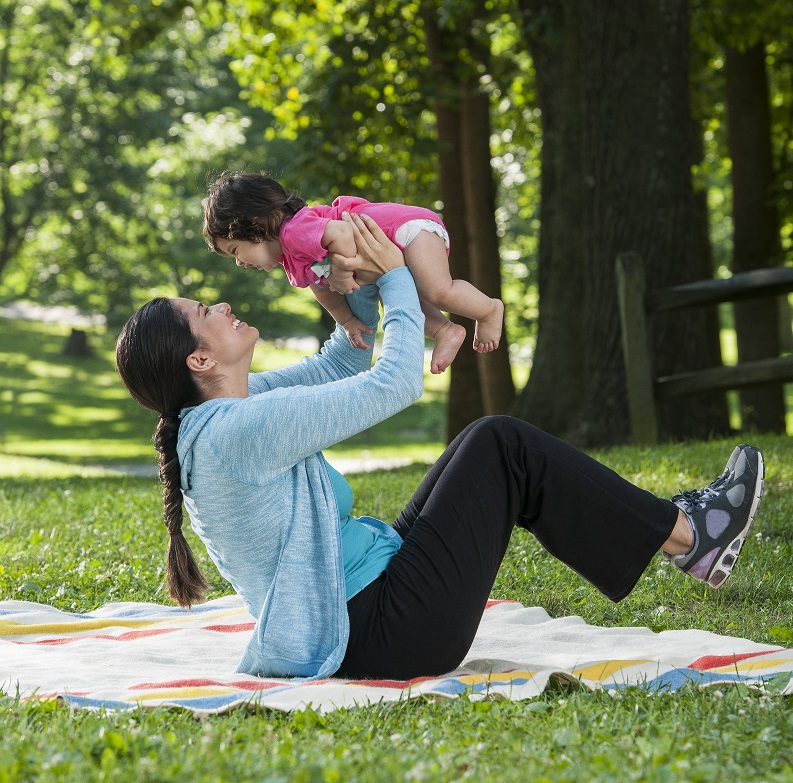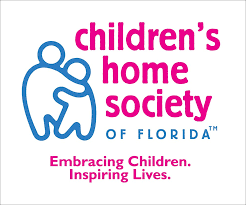By Shannon Currie, MSL, Community School Director, Children’s Home Society of Florida and Harumi Reis-Reilly, MS, LDN, IBCLC, Lead Program Analyst, Breastfeeding Project, Safe, Healthy and Resilient Communities, NACCHO
Meeting Teen Moms Where They Are: An Innovative School-based Breastfeeding Program
Children’s Home Society and Commonsense Childbirth engaged the community of Pine Hills from community-based partnerships designed to demonstrate improvement in breastfeeding practices for registered participants in the early post-partum period, at 6 months and 12 months, as compared to 2013 statistical data collected from the Florida Department of Health. Children’s Home Society (CHS) of Florida provided Wellness Coaches to deliver peer lactation support and education through direct referral and online support through the Peer and Online Lactation Support (POLS) portal.
Adolescent African American mothers face unique challenges to breastfeeding at optimal rates in the rural, low-income area of Pine Hills, Florida. Through funds from NACCHO’s Reducing Disparities in Breastfeeding through Peer and Professional Support grant, Children’s Home Society of Florida implemented a breastfeeding support program in a local high school, bringing much-needed support services to new and expecting teen mothers.
Challenge
Pine Hills, one of the poorest areas in Florida, is a predominately African American community, with significant racial disparities in birth outcomes, Sudden Infant Death Syndrome (SIDS) rates, and breastfeeding initiation rates. Pine Hills is located within Orange County. In 2016, the overall infant mortality rate for Orange County was 7.1 per 1,000 live births, while the black infant mortality rate was 12.3 per 1,000 live births. These both represent an increase over infant mortality in 2015.1 In 2015, the Orange County birth rate among adolescent mothers aged 15-19 was 15.1 per 1,000 for white teens and 29.6 per 1,000 among black teens, higher than the Florida state adolescent birth rate of 20.3 per 1,000.2 In addition, Pine Hills’ overall unemployment rate is 14%.3
The lack of a supportive environments in the Pine Hills community makes breastfeeding an unfeasible option for families, especially for adolescent African American mothers. There are no Baby-Friendly Hospitals (BHFI) serving Pine Hills residents, and their community lacks formal workplace breastfeeding support policies and breastfeeding-friendly Early Care Education facilities. Within the community, there is only one part-time, professional lactation support provider located in the local WIC office. Transportation is usually an additional barrier to accessing services in rural areas. This barrier is heightened for adolescent mothers, as they often must rely on parents or guardians for transportation. Additionally, teens may not be empowered to make their own health decisions. Therefore, if their families do not support breastfeeding, they may not be able to access support services at all.
Children’s Home Society (CHS) of Florida is the oldest and largest statewide organization in Florida serving children and families. During their 112-year history, CHS has worked with pregnant and post-partum women to provide home visiting services including Healthy Start,  Healthy Families America, and Early Head Start. With funding from NACCHO, CHS focused on engaging Pine Hills’ adolescent mothers in breastfeeding support services.
Healthy Families America, and Early Head Start. With funding from NACCHO, CHS focused on engaging Pine Hills’ adolescent mothers in breastfeeding support services.
Working with minors brings unique challenges. Many lack transportation, have competing time demands of school and work, and experience the social stigma around teen pregnancy, which often results in a lack of social support. Prior to working with CHS, Evans High School (EHS) had no existing breastfeeding support for student mothers to breastfeed at school. Teen mothers and their families did not have the education and support needed to challenge common breastfeeding myths and overcome barriers.
Solution
CHS developed a breastfeeding support program at EHS to provide educational, emotional, and social support to pregnant and new teenage mothers. Teens today are digital natives and new mothers tend to spend more time online after giving birth. CHS made use of technology to engage expecting and new adolescent mothers in breastfeeding support services through their Peer Online Lactation Support (POLS) program, which provides mothers with interactive online lactation support and educational resources.
Establishing relationships with key partners including school administration, staff and students, Orange County Public Schools (OCPS), and True Health Wellness cottage was essential to the program’s success. Cultivating relationships with community partners including WIC, Healthy Start Coalition of Orange County, and Common Sense Childbirth (CSC) helped to identify resources for mothers beyond the school setting.
In collaboration with CSC, CHS increased their organizational capacity by training culturally diverse community health workers, also known as Wellness Coaches, using the Community Outreach Perinatal Education (COPE) curriculum. This enabled the Wellness Coaches to become doulas, childbirth educators, and lactation educators. Those newly trained coaches were then matched with pregnant clients to provide breastfeeding support throughout the pregnancy and postpartum period.
Results
CHS used their partnership with OCPS and EHS to open a “No-Judgment Zone” lactation room, equipped with a hospital-grade lactation pump, within the high school building for the student mothers to pump and store breast milk privately during the school day. Participating students were issued special hall passes from school administrators who acted as student advocates to ensure that pumping breaks did not affect class attendance. Additionally, a new lunch program was introduced for pregnant and breastfeeding students to receive additional healthy foods to meet the increased nutritional needs of breastfeeding mothers.
Wellness Coaches engaged teen mothers’ families to improve support at home. Students were encouraged to invite their support system, including grandmothers and fathers, to ongoing group meetings. Wellness Coaches used these opportunities to dispel breastfeeding myths and provide educational support to every person directly involved with the mother’s parenting and breastfeeding process.
CHS addressed the transportation barrier for teens co-locating lactation support services within the school grounds meeting the teens where they were. Additionally, providing support through their online portal, http://www.ifeedmybaby.com, allowed teen mothers and fathers to ask questions and engage with Certified Perinatal Educators at any time.
Lessons Learned
CHS encountered some challenges when implementing its program. Establishing key partnerships enabled them to succeed and sustain the program. Partnering with OCPS and EHS and training breastfeeding champions within the high school allowed CHS to create a more accepting breastfeeding environment within the school setting. In addition to the school partnership, CHS worked in collaboration with the Easy Access Women’s Health Clinic to integrate CHS perinatal educators, who then provided education and resources to expecting mothers in the clinic. An additional partnership was established with the pregnancy center to provide monthly breastfeeding support groups with new and expecting mothers. CHS can also attribute their success to engaging the teens’ families, who often are the decision-makers in their children’s lives.
CHS has improved the breastfeeding landscape in Pine Hills by changing systems and strengthening partnerships to create a more breastfeeding-friendly environment. CHS support services have become a signature initiative that is well attended by pregnant and post-partum teen mothers and fathers. Currently, CHS has extended their breastfeeding services to two additional community providers who serve teen and adult mothers. They have also expanded the program to another high school within a predominately black and largely underserved community.
For more information:
Children Home Society of Florida: https://www.chsfl.org/
References
- Florida Department of Health. (2017). National Infant Mortality Awareness Month. Retrieved from http://orange.floridahealth.gov/newsroom/2017/09/infant-mortality.html Accessed on October 17, 2017.
- Florida Department of Health, Bureau of Vital Statistics. (2015). Birth by Mothers Age – Orange County. Retrieved from http://www.flhealthcharts.com/charts/
- U.S. Census Bureau; American Community Survey, 2011- 2015 American Community Survey 5-Year Estimates, (2015 – Employment Status, Pine Hills CDP, Florida; using American FactFinder; http://factfinder2.census.gov









